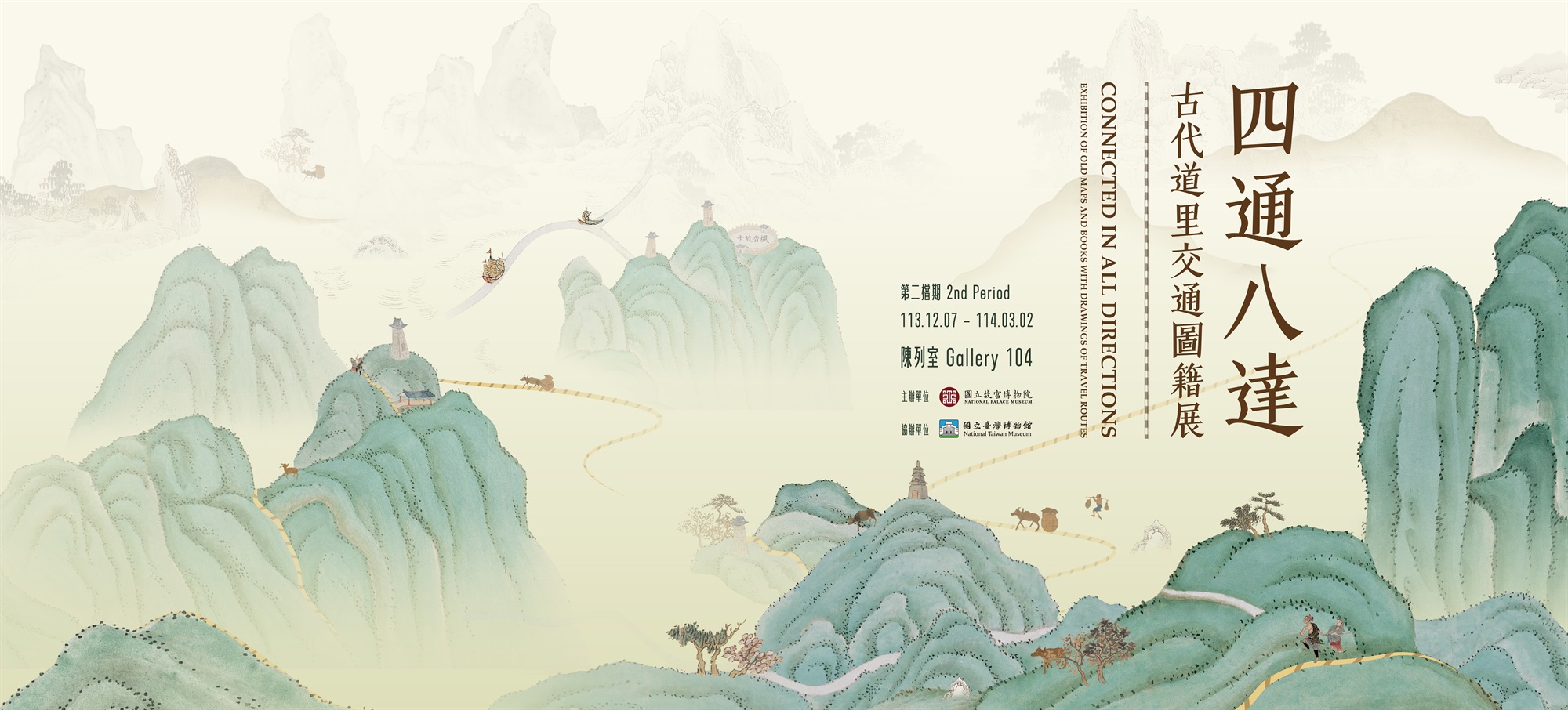The Southern Patrol Route
Besides vising mausoleums, Qing emperors frequently left Beijing to inspect the south (particularly the Jiangsu and Jejiang Provinces) to learn about people’s living conditions and assess waterworks. Emperors Kangxi (1654-1722) and Qianlong (1711-1799) each undertook six southern inspection tours, leaving behind numerous southern inspection maps (marked with short horizontal lines with yellow solid lines) detailing the itineraries as well as the resorts, mountains, rivers, and villages along the way. This section displays three maps, namely “Illustration of Routes from Shimen Township to the Imperial Camp of Tangqi Towanship in Haining County,” “Illustration of Route from Tangqi Towanship to Hangzhou,” and “Illustration of Route from Chen House of Haining County to the Temporary Palace of Hangzhou.” These maps all depict the same inspection tour, with the first map preseting the route from Da-ying north of Shimen Township, Jiaxing Prefecture, Jejiang Province southwards along a route parallel to a canal. At Shimen County, the route divides into two, where one continues south to Haining County while the other heads west to Da-ying in Tangqi Township and then moves south. Once reaching the Beixin Pass, the route enters a waterway to Zuojia Bridge and switches to land to enter the resort in Hangzhou City. The third map is a continuation of the first map, depicting the route from Shimen County to Haining County. From there, it exits through the Zhenhai Gate south of the county, passing through Laoyancang, Xixincang, Lijiabu, Baxianshi, and finally arriving at the temporary imperial palace within the city of Hangzhou Prefecture. According to the maps, Haining County has not been promoted to a prefecture (which took place in 1773) yet, suggesting that the three maps predate 1773. Judging from the annotation “chaitang” south of Haining County and on the north bank of the Qiantang River, and the fact that Qianlong’s first stop during his fourth southern inspection tour was likely Haining, one can surmise that this map might have been used during Qianlong’s fourth southern inspection tour in 1765.


